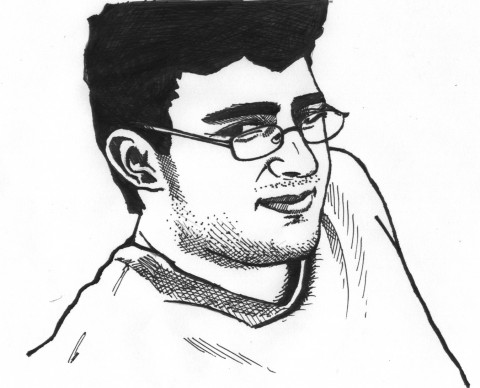
While almost every student on a college campus is doubtlessly aware of the ubiquitous convenience of Google, not all are aware of the multi-billion dollar company’s other assets. Take, for example, Google SketchUp, a free 3-D modeling program purchased in 2006 from a company called @Last Software. Since the program became freely available, anyone with a computer can access the software, a veritable virtual playground for architects, and use it to hone their design skills.
One such user, Andrew Nathanson ’13, has been fluent in the software since the seventh grade. His skill with the software has paid off greatly; in 2008, he was the youngest person ever invited to the Google SketchUp 3D Basecamp in Mountain View, California, which functions as a conference for prominent users of the software to discuss ideas and upcoming changes. Closed to the public, the attendees arrive on an invitation-only basis. In the summer of 2010 he was invited once more to Basecamp, this time in Boulder, Colorado, where he again was the youngest attendee. I sat down with Andrew and asked him some questions about both of his experiences.
“I was introduced to SketchUp in seventh grade in the introductory computer course at Rye Country Day School in Westchester County, New York.” says Andrew. “It was one of many programs that we were briefly introduced to, but it struck a chord with me. It was a new canvas I could use to design things.
I’ve always been interested in design; I played with blocks as a kid, and later played the Sims, more for the house building than the people. Where the Sims was limited however, SketchUp went further.”
While many students entering college are still undecided on their potential majors, Andrew was an exception.
“I knew this was what I wanted to do before choosing to come here,” he says. “I declared my major, Architectural Studies, last April. I wanted to find a way I could study on my own terms. A lot of schools have programs for aspiring architects that let them build a schedule of nothing but architecture. Some were very time consuming, and didn’t leave much room for extracurricular activities, which are important to me as well. I wouldn’t have attended a school that lacked a strong but flexible architecture program.”
Andrew’s participation in the Basecamp event was hardly passive; during his first visit he gave a presentation about the program and how it had influenced him.
“During the 2008 conference I was invited to talk about how SketchUp had affected my life in various ways,” he says. “I also talked about internships, how the program is used variously in the classroom as well as independent studies. There were two hundred of SketchUp’s biggest users; professional architects, landscape architects, cabinet makers, woodworkers, engineers, etc. We spent one whole day simply discussing what workshops we wanted to discuss, and the proposals made were integrated into the activities.”
Andrew’s youth set him apart from his peers at both conferences, and as many Conn students are already undoubtedly aware, he soon found himself with an endearing nickname.
“The first time I went I was under eighteen and my dad had to chaperone me,” he says. “I was known as ‘The Kid.’ This year, I traveled by myself, which was fun, but I was still the youngest. I recognized many of the same faces. I was excited both times, but I was never actually nervous until my presentation in 2008.”
Andrew has been skilled in SketchUp since his time in middle school, where he became proficient after immersing himself in the program.
“Since 7th grade, I dove in head first. It’s almost second nature to me, thinking in 3-D, thanks to SketchUp. My casual usage of the program has decreased since school started, but it’s opened many doors for me. It’s a very intuitive program, and more user friendly than two dimensional programs such as AutoCAD. It can be used for event planning, set building, engineering, etc. I’ve used it recreationally fairly often.”
Regardless of where Andrew’s life takes him career-wise, whether to an architectural firm, or even to Google itself, he’ll still be known, at least for a time, as the “Google Kid.”








